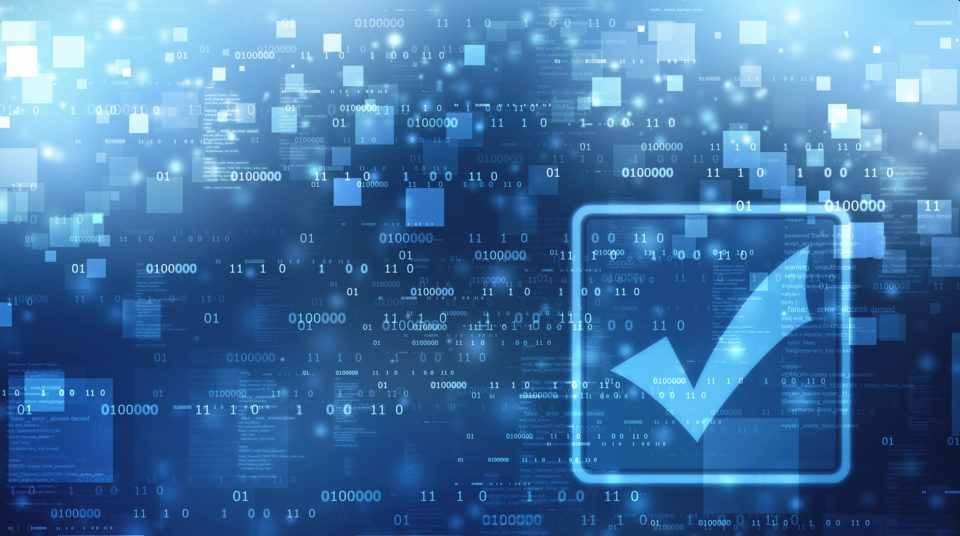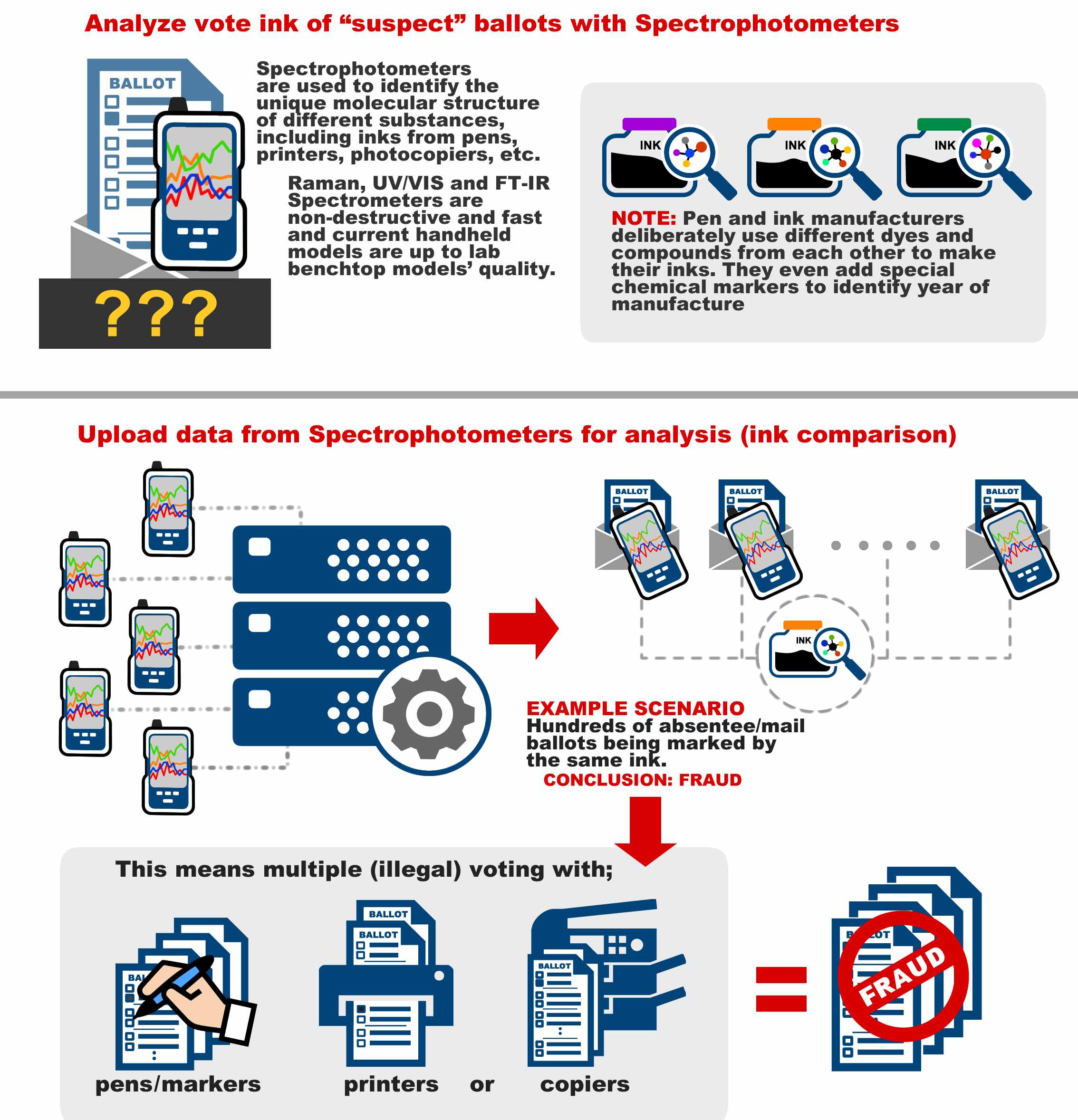How blockchain and spectrophotometer could have prevented voter fraud in the U.S. 2020 election

The first U.S. presidential election took place 231 years ago. The election, which took 26 days, was held from Monday, December 15, 1788, to Saturday, January 10, 1789. It was the only U.S. presidential election that spanned two calendar years (1788 and 1789). According to historians, the election was fair even with little or no technology used at the time.
Over two centuries later, it’s incomprehensible and sad to see that the most powerful nation in the world, a country that has sent men to the moon, is still unable to conduct a free and fair election. With several reports of voter fraud in a half-dozen states across the United States, coupled with the Voter Integrity Project claiming there was enough evidence to overturn the recent November 3 election, the 2020 election will go down in history as the most unfair, fraud-ridden election since America received its independence 244 years ago.
In November 2020, the Voter Integrity Fund investigative team analyzed voter data gathered from six states. Headed by Matt Braynard, early reports from the group indicated they had found evidence of possible fraud. Instances of “dead voters” were reportedly low, but the group did find instances of ballots cast in the name of voters who denied casting the ballots. We wrote about the group immediately after the November 3 election when the group raised almost $1 million in a crowdfunding campaign to use data science to detect voter fraud in the U.S. 2020 election. You can read more about the group’s final findings and conclusions.
So, this leads to the questions being raised by many people, including: How did we get here in the first place? Was voter fraud in the U.S. 2020 election by design, intensional, or orchestrated by powerful interests before the election? The last question we really wanted to ask is, can voter fraud be prevented with the use of better technology?
We may not be able to provide answers to all these questions. But there is one thing we all can all agree on: the use of mail-in ballots in the U.S. 2020 election was unprecedented. In the 2020 general election, about 65 million mail-in ballots were cast versus a total of 33.5 million mail ballots cast throughout the 2016 general election. One other thing that is also clear about the 2020 election is that various U.S. states did little very little to ensure the audit of mail-in ballot voting. There were several reports of lack of matching signatures, voting irregularities including many people voting twice or vote cast by dead voters, among others.
Ensuring the security and auditable votes are critical to the integrity of any free and fair election. It is also important that the voting process is transparent where only legal votes are counted. There were also multiple reports that Dominion, one of the election systems software used in the 2020 election, is not fully secure and susceptible to hacking. In addition, the system also does not provide a good auditing feature required for proper ballot accountability. There were also stories of Dominion software changing votes. One of them was a popular video footage of vote switching during a CNN live election coverage on election night.
The question remains: Could better technologies such as blockchain and biometrics have prevented voter fraud in the recent U.S. election? The answer is yes. These two technologies solve two key issues and missing features in the U.S. 2020 election: auditing and traceability. As of writing, none of the six states accused of voter fraud agree to an independent post-election audit to ensure that votes were counted accurately and proper procedures were followed.
Blockchain is a technology that has been around for a few years now. It is also the underlying technology behind bitcoin, the world’s most popular cryptocurrency. In a very simple sense, the power of blockchain lies in its auditing feature which enables fraud to easily be detected. Essentially, blockchain is a growing list of records, called blocks, that are linked together using cryptography. Each block contains a cryptographic hash of the previous block, a timestamp, and transaction data.
The appeal of blockchain is that it is a decentralized system that doesn’t require voters to trust anybody. The voting data is also encrypted to protect the identity of individual voters. With blockchain, illegitimate votes cannot be added after the votes are counted and the historical voting record cannot be changed because everyone holds a copy. For example, in the case of bitcoin, a new transaction is encrypted as a new link in the chain, which is distributed to numerous sites. If anyone tries to change a link in the blockchain, everyone who stores the bitcoin blockchain knows it, so fraud can easily be detected and removed. Blockchain has many operational use cases beyond fraud detection. You can read more in our piece about the visual guide to blockchain.
In addition to blockchain, biometrics and spectrophotometers are two other technologies that could be used to not only prevent voter fraud but also used to show evidence of election fraud. With about 65 mail-in ballots cast in the 2020 election, spectrophotometers to analyze the ink of “suspect” ballots. A spectrophotometer is a technology used to measure the amount of photons (the intensity of light) absorbed after it passes through the sample solution.

If you read this far, thank you! Now, let’s see how one startup is using some of these technologies to address the voting problems and challenges mentioned above. Voatz is a blockchain startup redefining how we vote. We first covered Voatz back in 2018 when the startup announced its official launch. In fact, Voatz was founded 4 years earlier by Nimit Sawhney as a side project at the SXSW hackathon. As of October 2019, the startup has conducted over 31 pilots and also completed a $7 million Series A funding.
Uknown to many, more than 30 U.S. states currently offer online voting, but it has not reached mainstream adoption due to security concerns. Unlike the Dominion voting system which uses antiquated and proprietary technology, Voatz uses blockchain technology and biometrics in order to verify voter identities, forgoing the storage of sensitive personal information in a database.
To guarantee voting integrity, once a user downloads the Voatz app, they verify their phone number, provide a photo ID, as well as a “selfie.” Facial recognition and voter rolls are used to verify identity and confirm a match between the picture and ID submitted. After the user is offered a secure token (activated through the use of a fingerprint) applicable to eligible elections, the user’s biometric information is removed from the Voatz system. After all, votes are submitted to Voatz, votes are printed on a paper ballot and fed into a machine.
However, with all its boast about using blockchain and biometric technologies, some security researchers said that the Voatz voting app is dangerously vulnerable, not because it uses blockchain but because Voatz’s use of blockchain does not extend to the mobile client. Voatz disputed the findings, saying that its server-side protections would stop the attack.
Even though Voatz implementation of blockchain voting is still fraught with challenges and vulnerabilities, it does not negate the potential and the use of blockchain in addressing the current election fraud in the United States. Using blockchain technology for voting could increase transparency while increasing the level of trust of the American people in its government.
To wrap up, below is a video of blockchain voting works.

